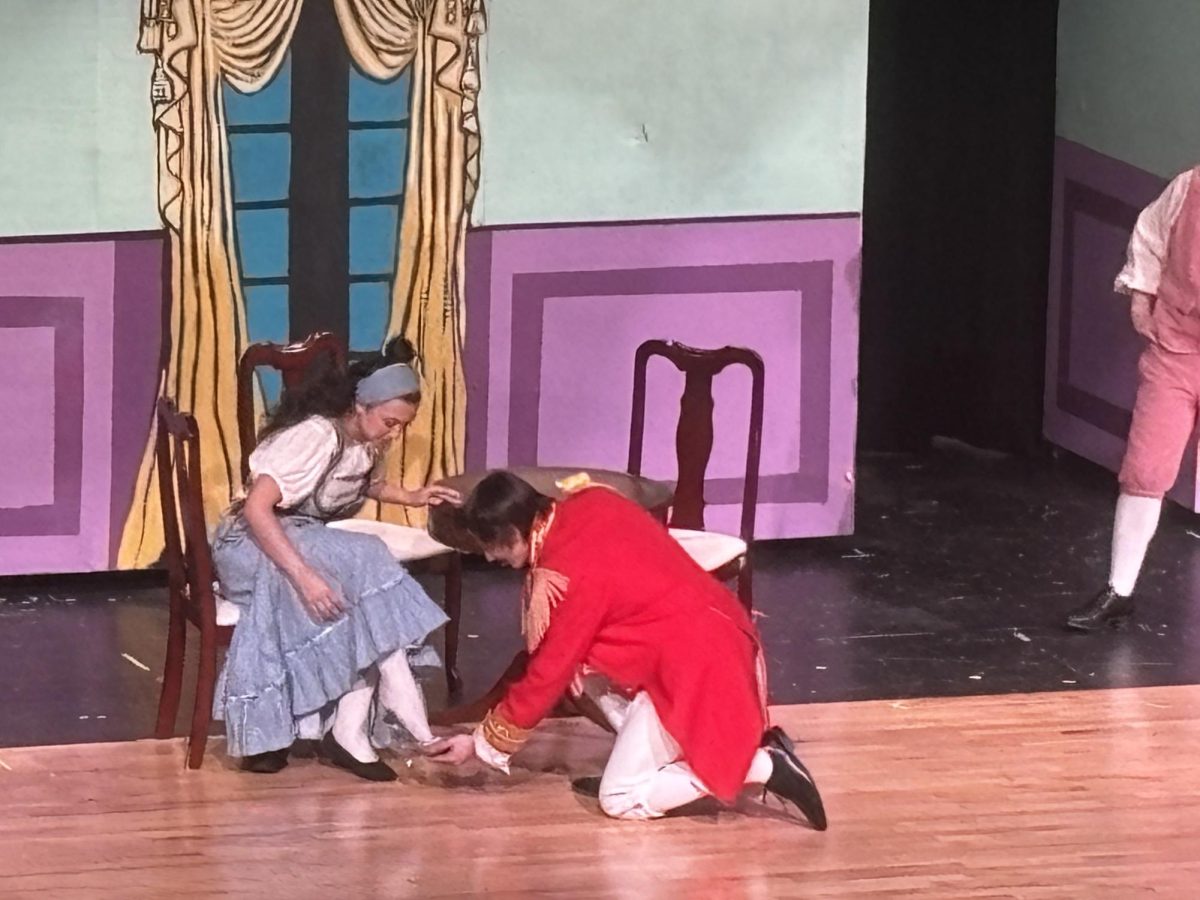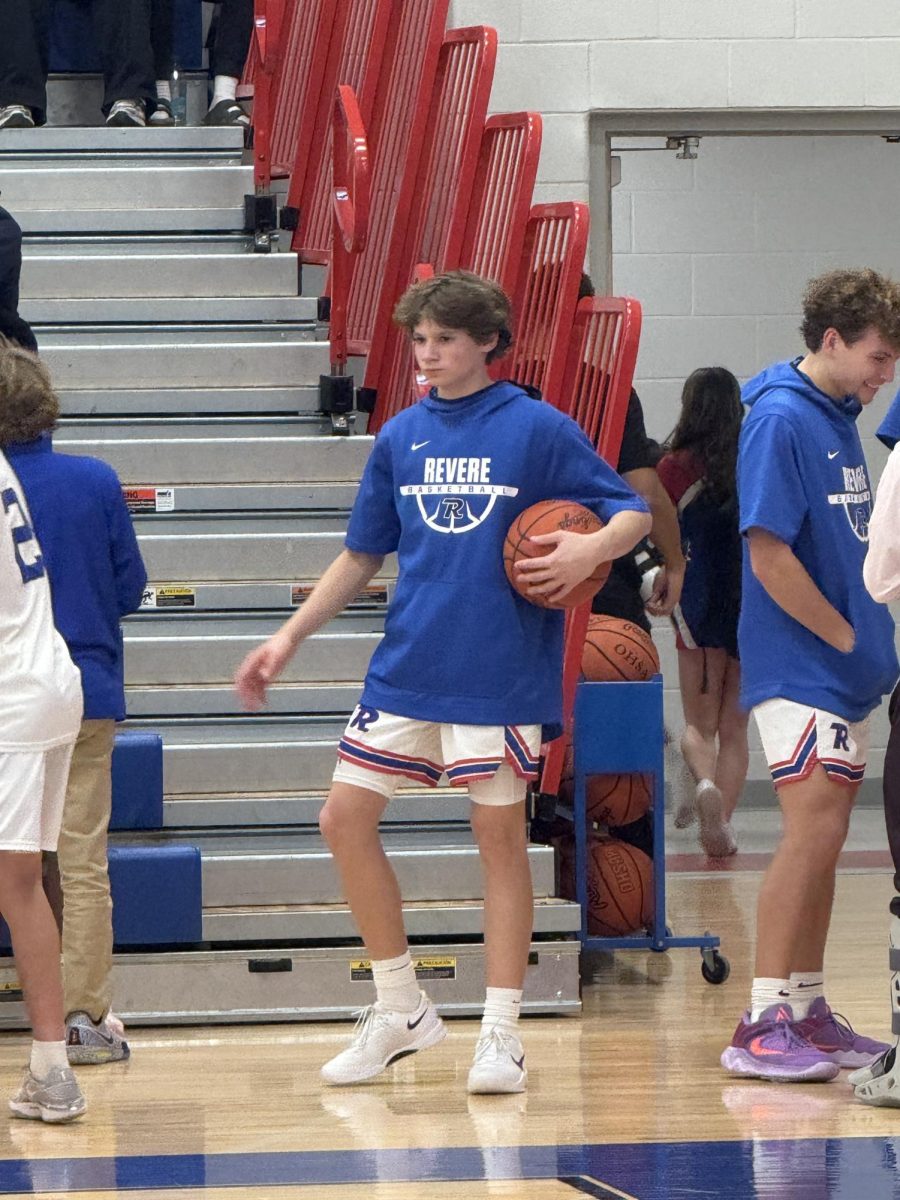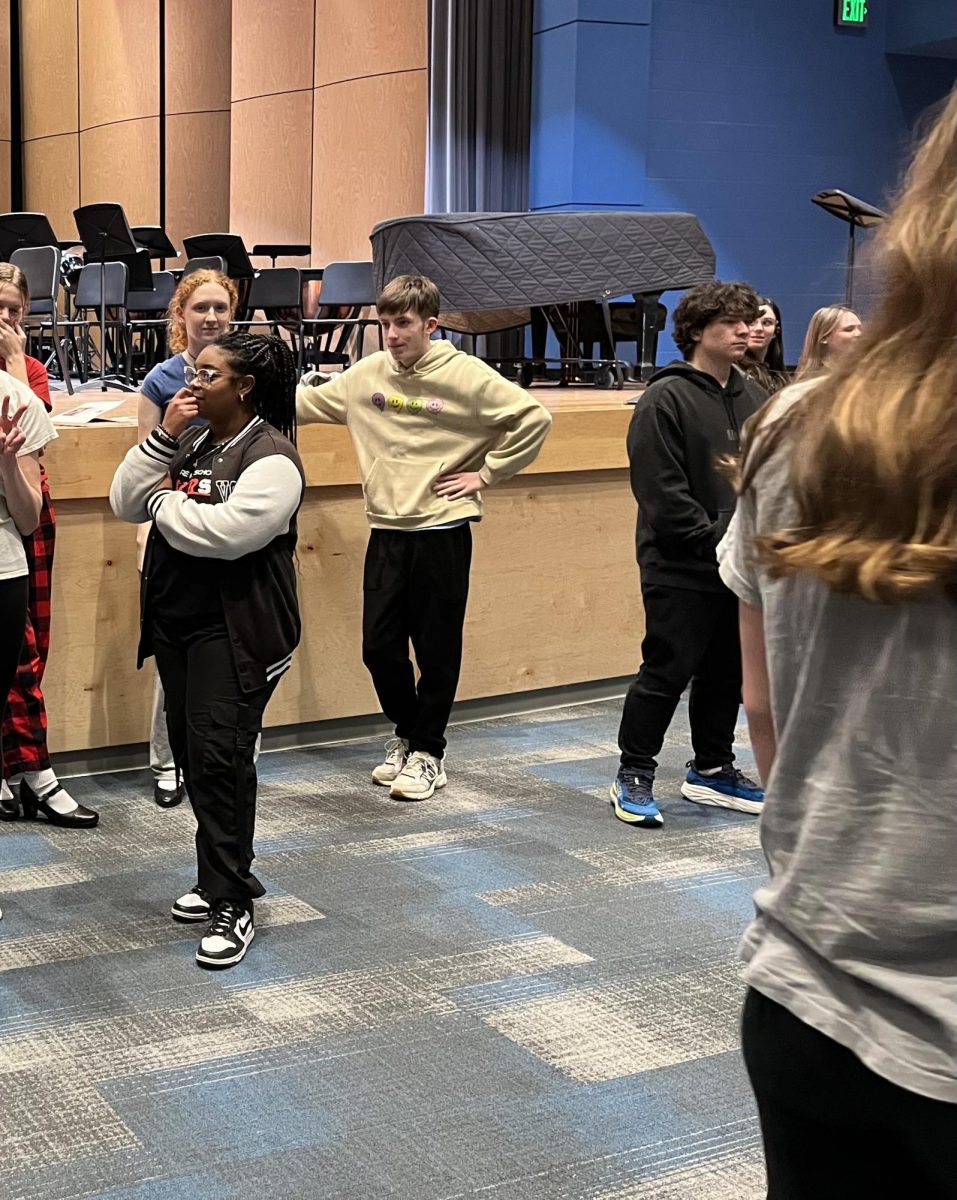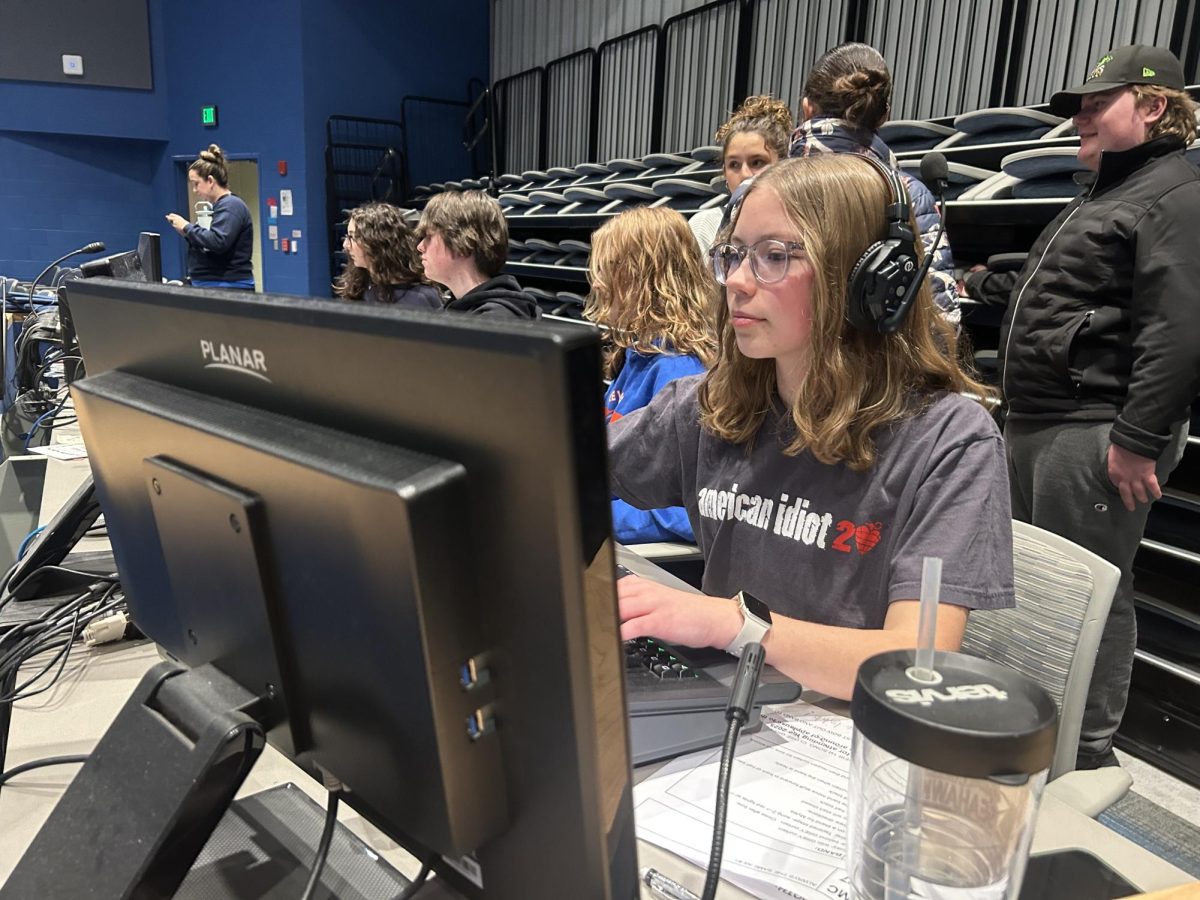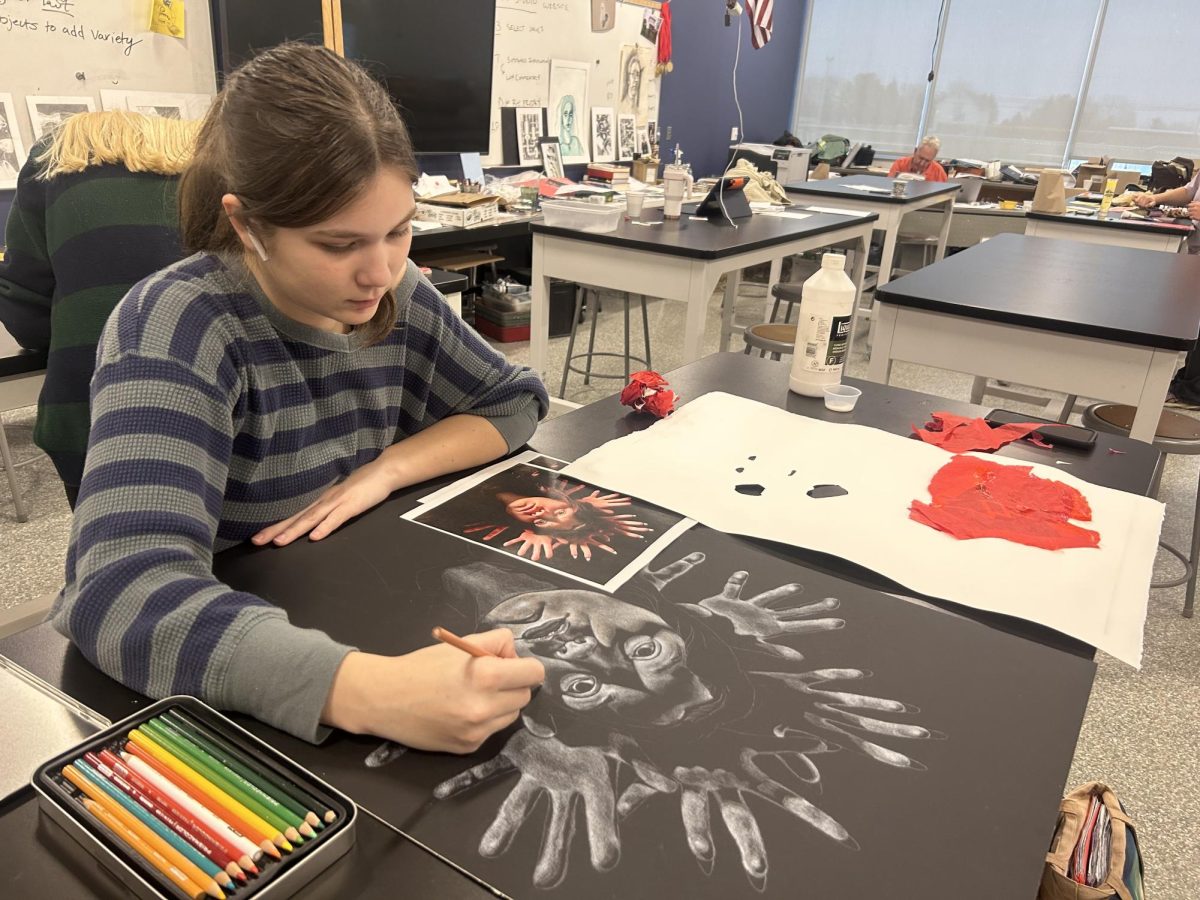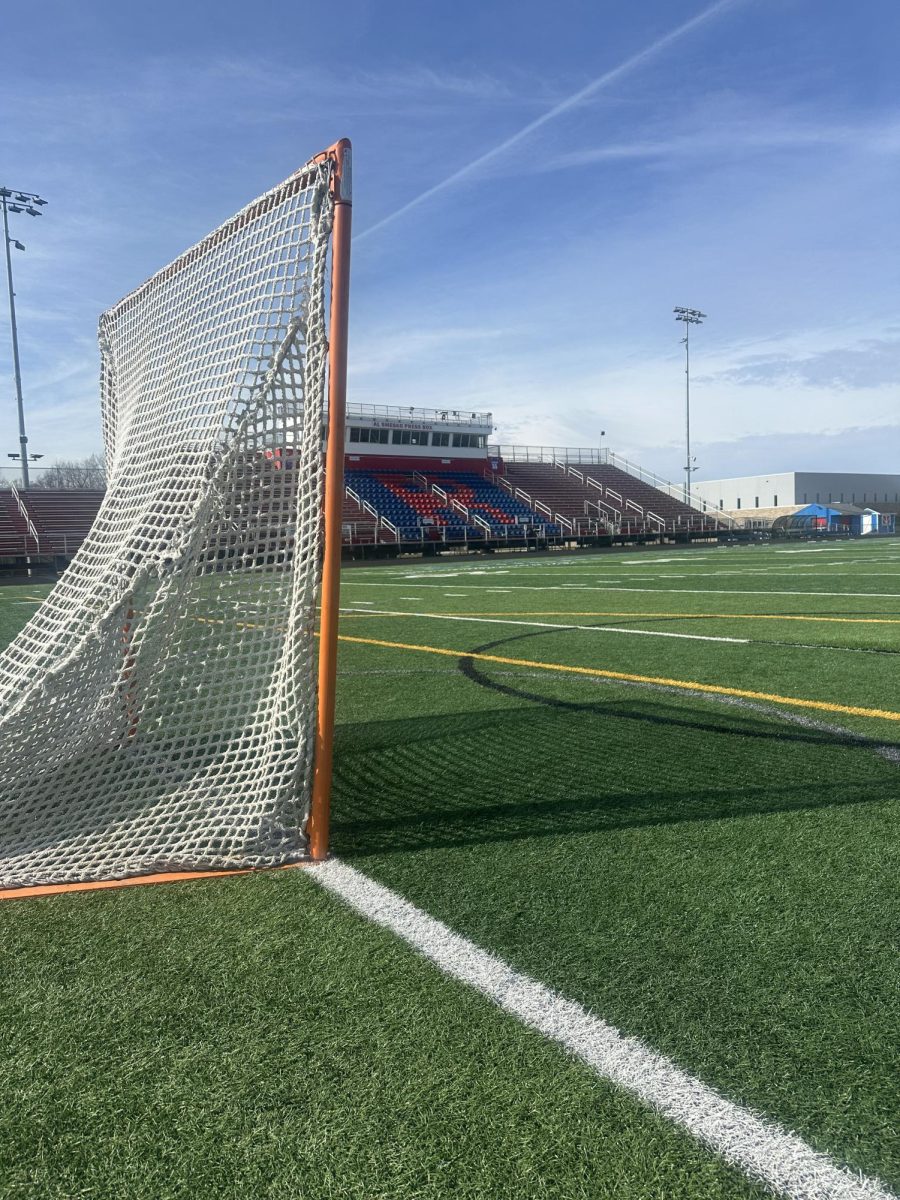248 hands hard at work constructing sets, holding scripts, painting backdrops and pressing piano keys. 124 students participate working both behind and in front of the curtain to illustrate the magical musical Cinderella as their spring production.
On the week of April 7, the Revere Players put on their production of Rodgers and Hammerstien’s Cinderella for five consecutive days. Opening to nearly full houses each night, the play debuted Senior Gianna Kosir (Cinderella), Tessa Kraynak (Step Sister Joy) and Katarina Stevanovic (Fairy Godmother), to name a few, in a magical, sassy sense, a twist on the traditional Disney version.
The choice of Cinderella came from Sarah Pine, the musical’s director, who wanted to incorporate more classical theater into the group’s resume.
“I knew that Rodgers and Hammerstein would probably be a great fit. When you think of [the] Golden Age of musical theater, you really think of Rodgers and Hammerstein. And in terms of just the kids that we had, I thought Cinderella would just be like a really great fit for what we had going on and we hadn’t done it,” Pine said.
Compared to the fall production of The Crucible, Cinderella called for a more intensive set design and crew. There were multiple different pieces the backstage crew needed to create from the picturesque castle stairs to the magical carriage, not including the immense backdrops which create a unique feeling in each scene.
“I thought this would be an opportunity to really showcase all these amazing technical skills that we have. It was an opportunity to go really big when we’d gone really small,” Pine said.
In addition, The Crucible had many darker themes and was a very intense play, so Pine decided that she wanted to end the year with a sweeter tone.
“I wanted to do something that was more lighthearted because the fall [production] was so heavy. Part of my goal is to make sure that students are getting a really good range of experiences over their time here,” Pine said.
Stevanovic, a three year member of Revere Players, agreed that the more “lighthearted” tone was important for a lot of the cast who had played more emotional characters in the past.
“When I got the fairy godmother, I was surprised and it ended up being so amazing. They just said they wanted me to be a diva. And I just took that and ran with it. I played a very, very sad woman in The Crucible [who] was grieving the loss of her child and in Midsummer Night’s Dream I played Hermia and she was just very heartbroken. So it was just fun to play a silly character,” Stevanovic said.
Those who attended the play or have seen Rodgers and Hammerstein’s version of Cinderella would know that it has a few tweaks from Disney’s version. Although they make an appearance, the mice do not talk, some characters boast a “spunkier” personality, and the music is different. Pine revealed that she actually prefers the music over Disney’s for its catchier tune.
“Their version is different just like the tiniest bit in that the music is different, and some of the characters that you associate with the Disney version [are different]. There’s no ‘bippity boppity boo’. This is like the revised nineties version of Rodgers and Hammerstein’s Cinderella,” Pine said.
In addition to these changes, Pine allowed a lot of creativity when it came to lines giving actors the freedom to explore their characters. This impacted Stevanovic as she was really able to dive into her character and develop her throughout the show.
“[In] a lot of the character building [Pine] would give us, she kind of planted the seeds and then let us do whatever with them, which was really great for this kind of a show. And it ended up just being a lot more fun because of it. People had such personal interpretations of their characters,” Stevanovic said.
Rodgers and Hammerstein are a very famous classical music composer and in their version of Cinderella, utilized interesting key changes and melody’s to create the musical’s dramatic tone. Micheal Wiley, the vocal instructor for the musical and choir teacher at Revere Middle School, explained the challenge this music brought.
“It is a different style, so it is a little challenging for them because the music doesn’t transition the way that they think it’s going to. There were a lot of key changes and a lot of different things that were very different from the past couple musicals that we’ve done,” Wiley said.
Kraynak pointed out that the music was very different from traditional pieces and with many of the ensemble having a choir background the challenge was getting out of a traditional mindset.
“It took a lot of time, even outside of rehearsals, to just drill it. We were lucky to have a lot of very strong choir members who could kind of lead that as well as Mr. Wiley,” Kraynak said.
Pine explained some of the differences in producing a musical versus a play, the biggest being the multitude of elements that go into a musical.
“When we do the play in the fall, we’re really focused on the acting. We can dive deep [and do] rich character work. When you got the musical going on, now all of a sudden we’re factoring in dance, we’re factoring in music, there’s singing, there’s kind of all these other pieces that go into it,” Pine said.
Backdrops in themselves are a huge and tedious part of the production. Each one is sketched by art teacher Bob Pierson and then handed off to stage crew for painting, which can take a week depending on how complicated the design is. Among those are lighting and the constructed set pieces; other technical elements, such Cinderella’s transforming dress; and the paper mache horse heads, which were organized within months.
“That’s really fun [but] its also really intense. It’s a lot of work, but this show is just so fun and lighthearted. It’s hard not to get swept up in the magic of it,” Pine said.
To create the best cast possible, the Players hold three days of auditions, each with a different purpose. The first day usually consists of vocal tryouts followed by a day of dancing where the directors watch out for rhythm and execution of the choreography.
“We hear what all their voices sound like and we have like sheets that we use to evaluate on a scale of one to five different aspects of their voice like how is their projection, how is their tone, how is their pitch? And then the next day we do something similar with dancing,” Pine said.
Since vocals are such a large part of the production, time is set aside for students to get instruction on their music. Working with the vocalists throughout rehearsals, Wiley explained what his role covered this year.
“[It] entails being in charge of teaching all of the songs to the students, including the title characters and the ensemble, teaching them the harmonies, melodies, and all the different musical aspects of the singing portion,” Wiley said.
For Wiley, the most important thing a student can do while performing live is pay attention to their surroundings, making sure to account for everything going on around them in any given scene. Many student performers who have not had much onstage experience can get nervous, but there are many ways to combat the nerves.
“There’s different breathing techniques they can do to try to relax themselves, maybe some imagery. Things like that to try to just get them to relax and just reassure them that everything is gonna be fine. Even getting some physical exertion, I know some kids do some pushups or physical activity to get rid of some energy,” Wiley said.
The third day is reserved for callbacks, which in recent years has included everyone who tried out the first two days. The idea is to find what each student’s strengths are while including as many as possible.
“In the ensembles, if you’re a really strong actor, sometimes we have roles that don’t have as much singing and that might be a really good fit for you. Or there are roles that really need a really strong singer and dancer. We as the directors have like sheets where we just kind of rank our individuals and then we can kind of add up those scores. It gets very technical,” Pine said.
When it comes to planning out what the sets and other technical aspects will look like, Pine and Pierson collaborate as soon as possible to lay out the groundwork.
“Mr. Pierson and I will have a conversation pretty much as soon as I decide on a show and I will write him out a list of locations. He starts drawing up blueprints [and] coming up with the designs. He even had to track down vintage carriage wheels for this particular production,” Pine said.
As the crew gets to work on set design and actors begin transferring their lines to onstage performances, rehearsal can get a little crowded leading some of the others groups to find other practice spaces. Members of the pit, the musicians that perform live tracks during the show, meet in the band room for their practice with Katie Pflueger, Revere Middle School’s band teacher.
“Ms. Pflueger will start to recruit pit members for us and they hold rehearsals throughout our rehearsal process. They meet separately and then tech week, it kind of all comes together. Live music just makes all the difference, it just makes the moment feel so electric,” Pine said.
According to Pine, another positive of having a live pit is being able to adjust to an actor who may be speeding up or slowing down in their performance.
“They’re working together at that moment. It just enhances the experience,” Pine said.
Theater is a large part of Pine’s life both inside and outside of school and she encourages anyone who wants to try it to go for it. There is a place for everyone from the tech crew to the acting to the pit crew.
“It’s just really cool to see all these different students putting their heart and soul into something. It really is quite a magical experience,” Pine said.
Kosir compared theater to sports, highlighting the importance of the team supporting each other while emphasizing the work that has to be put in by each individual to succeed as a whole.
“The difference between us and sports is in sports your position can change at any moment. If you’re not playing well, someone else is going in for you. Or if you played offense and you’re better at defense, they’ll switch you. But with theater, you are cast as best you can and you are stuck in that position,” Kosir said.
As much as theater depends on an actor knowing their lines or notes, it also relies on the community to thrive and create deeper relationships.
“A lot of times it was just everyone else building each other up. There is just so much love in that community. I highly recommend getting involved any way you can,” Kosir said.
Click HERE for more Lantern coverage on theatre at Revere.

